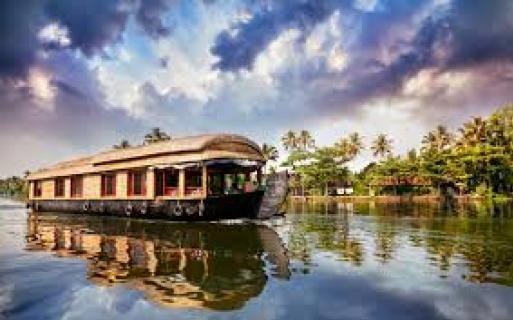Nestled in the heart of Kochi, the Kerala Kathakali Centre is one of the most renowned cultural landmarks in Kerala, dedicated to preserving and promoting the rich heritage of the state’s classical arts. As a vibrant hub for traditional dance, drama, and music, the center plays an essential role in educating both locals and international visitors about the iconic performing arts of Kerala, particularly Kathakali. In this article, we will explore the history, significance, offerings, and experiences at the Kerala Kathakali Centre in Kochi.
What is Kathakali?
Before delving into the Kerala Kathakali Centre itself, it’s important to understand the art form it celebrates: Kathakali. Kathakali is a traditional dance-drama that originated in the state of Kerala. It is known for its elaborate costumes, intricate makeup, vivid storytelling, and powerful, expressive gestures. The word "Kathakali" translates to "story play," and the performances are rooted in Hindu mythology, often drawn from the Ramayana, Mahabharata, and Puranas.
Kathakali stands out among the classical dance forms of India for its fusion of dance, theatre, music, and acting. What distinguishes Kathakali from other dance forms is the use of dramatic facial expressions, or Mudras, to convey a story or emotion. The makeup plays a crucial role in Kathakali performances, with each character’s appearance reflecting their nature – from gods to demons to warriors. The performance also relies heavily on the rhythm of music, with live traditional instruments such as the chenda, idakka, and maddalam accompanying the dancers.
History and Purpose of the Kerala Kathakali Centre
The Kerala Kathakali Centre was established in 1990 with the aim of preserving the classical art forms of Kerala, especially Kathakali, and making them accessible to a global audience. Its primary objective is to promote and perpetuate Kerala’s rich cultural heritage while offering visitors a chance to experience traditional art in its most authentic form.
Located in Fort Kochi, a historical area known for its fusion of colonial architecture and vibrant cultural landscape, the center serves as a beacon of cultural preservation. It was founded by Mr. G. Krishnan Nair, a noted figure in the promotion of traditional Kerala arts, who sought to create a space where the classical dance forms of the region could flourish.
In addition to its live performances, the Kerala Kathakali Centre is also known for offering training in various traditional Kerala arts, including Kathakali, Mohiniyattam, and Kalaripayattu. The center has garnered international recognition for its commitment to excellence in the arts and has attracted a wide range of students, artists, and tourists from all corners of the globe.
Kathakali Performances at the Kerala Kathakali Centre
One of the most compelling reasons to visit the Kerala Kathakali Centre Kochi is the opportunity to witness live Kathakali performances. The center is renowned for its authentic Kathakali shows, which remain true to the traditional practices of the art form. Performances are typically held in the evening, providing visitors with a captivating glimpse into the dramatic world of Kathakali.
The shows at the center are performed by highly skilled and experienced Kathakali artists who have dedicated years to mastering the intricate nuances of the dance form. They enact stories from Hindu mythology, portraying complex characters through expressive facial gestures, dynamic movements, and dramatic gestures. A single performance can range from 90 minutes to two hours, depending on the length of the story being told.
The makeup and costumes of Kathakali are one of its most visually striking features. Artists spend considerable time preparing their elaborate costumes, face paints, and headgear before the performance. Visitors to the Kerala Kathakali Centre often arrive early to witness the makeup process, which is an integral part of the experience. Artists sit in front of mirrors, carefully applying paint and decoration to their faces, transforming themselves into the various characters of the performance. This process, which takes approximately 45 minutes to an hour, is a fascinating spectacle for tourists.
During the performance, the artists rely on a combination of traditional rhythmic music and percussive instruments, led by the chenda drum. The music helps elevate the emotions conveyed by the dancers and adds intensity to the narrative. The idakka and shankh (conch shell) further complement the visual and theatrical experience, creating a symphony that guides the audience through the performance.
Kathakali Training and Workshops at the Kerala Kathakali Centre
In addition to hosting live performances, the Kerala Kathakali Centre in Kochi is a hub for training aspiring Kathakali artists. The center offers a range of training programs for both beginners and advanced practitioners of the art form. These programs are led by renowned gurus, who are highly skilled in Kathakali and its various elements, including Mudras (hand gestures), Abhinaya (expression), Nritta (pure dance), and Natya (drama).
For those looking to gain a deeper understanding of Kathakali, the center also organizes workshops and seminars where attendees can learn about the history and evolution of the art form, the importance of music in Kathakali, and the various storytelling techniques used. Students are encouraged to engage with all aspects of Kathakali, including the makeup and costumes, as well as the accompanying traditional music.
In addition to Kathakali, the Kerala Kathakali Centre also offers training in other traditional Kerala art forms, such as Mohiniyattam (a graceful dance form), Kalaripayattu (a form of martial arts), and Thiruvathirakali (a traditional group dance performed during festivals). These programs attract not only local students but also international visitors, who are keen to immerse themselves in the cultural richness of Kerala.
Visitor Experience at the Kerala Kathakali Centre
Visiting the Kerala Kathakali Centre is an immersive cultural experience that offers insight into Kerala’s classical arts. The center is a popular destination for tourists, art lovers, and students who are interested in exploring the world of Kathakali and other classical dance forms of Kerala. For those with limited knowledge of the art, the center provides English-language explanations of the performances, ensuring that audiences can follow the narrative even if they are unfamiliar with the intricacies of the dance form.
The center’s ambience complements the traditional performances, with its tranquil and welcoming atmosphere. It also offers a great place to relax and reflect on the performance after the show. Guests can explore the venue, take photographs, and even purchase souvenirs related to Kathakali and Kerala’s art forms, such as miniature Kathakali masks and traditional costumes.
Conclusion: A Gateway to Kerala’s Artistic Legacy
The Kerala Kathakali Centre is much more than just a venue for watching performances; it is a cultural institution that plays an integral role in the preservation and promotion of Kerala’s traditional arts. Whether you are a seasoned lover of classical dance or a first-time visitor, the center provides an unparalleled opportunity to experience the vibrant world of Kathakali in its most authentic form.
With its educational programs, live performances, and dedication to preserving Kerala’s rich artistic traditions, the Kerala Kathakali Centre is an essential stop for anyone visiting Kochi. It offers a glimpse into the cultural heart of Kerala, where ancient traditions come alive with each graceful movement, dramatic gesture, and resounding beat. Whether you're witnessing a Kathakali performance, participating in a workshop, or simply soaking in the atmosphere, the Kerala Kathakali Centre invites you to explore the soul of Kerala's cultural heritage.














